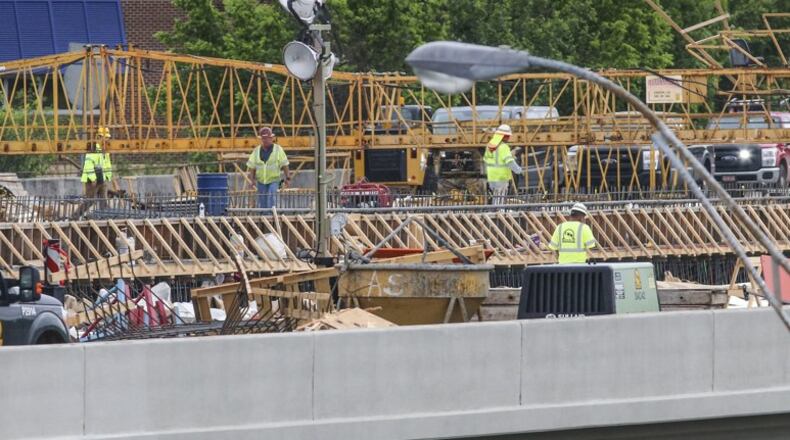What once was an astonishing void in middle of one of the busiest stretches of road in metro Atlanta is well on its way to completion again. The Georgia Department of Transportation announced earlier this week that the new target date for the I-85 bridge rebuild just south of GA-400 is May 26 — at the latest. This puts the rebuild's targeted finish on the Friday before Memorial Day — a day that typically has a horrendous PM drive for the official beginning of summer.
C.W. Matthews crews have rebuilt all the pillars, replaced all 61 beams, are pouring concrete decks and are well on their way to scoring big bonuses for finishing early. But one reader brought up a question that I have heard many times from others and even thought of myself.
Lisa C. and asked: “Doesn’t concrete need a ‘curing time’ before it ready for use?” and later added, “I am just not feeling great about how quickly this important piece of road is being rebuilt.”
I posed these concerns to GDOT. The state’s construction director, Marc Mastronardi, shed some insight on the material crews are using and why it works fast.
“Twenty-Four Hour Accelerated Strength Concrete is premised upon the use of a cement that is ground more finely than normal cement. This allows the chemical reaction that hardens the concrete to occur at a quicker rate,” he said.
So, the concrete used for the deck under the asphalt will cure more quickly, but how certain can we be that the feverish pace is not leaving loose ends?
“The nature of the construction the GDOT oversees has our oversight at every step along the way,” Mastronardi explained. “The I-85 rebuild is no different. In fact, it may have had the benefit of redundant inspections, due to the nature of our inspection staffing.
Onsite inspection through May 2nd is on the order of 3,500 man hours. Additionally, we have inspection process for the offsite fabricated elements as well.”
The offsite inspections to which Mastronardi is referring are for the big beams that GDOT had to truck in from elsewhere.
Another question I have gotten is about why this project is taking so much less time than a typical road project.
First, it’s an emergency. Losing an entire interstate bridge at once at such a critical location prompts drastic measures to replace it quickly. The large crews are working 24/7, whereas normal construction teams have to work during off hours, to avoid drive time lane closures. When the whole interstate is in need of replacement, the work doesn’t have to stop.
Also remember that money doesn’t talk - it swears. This I-85 bridge rebuild is a marriage between the public and private sectors and, assuming the bridge opens on time and up to standards, shows how the two can accomplish great things in concert.
C.W. Matthews can score over $3 million in incentives to finish the project early. This kind of encouragement isn’t on the table in a non-emergency scenario. Atlanta needs I-85 opened and C.W. Matthews has a seven-figure reason to push its crews around the clock and in the most efficient way possible to expedite the job.
Even with this information, you may still have qualms about the safety of the bridge or the incentive-driven process that pushes it to fruition. But with such scrutiny on this calamity from many auspices, GDOT knows it cannot afford to bungle this critical project. That factor alone should calm some nerves about the safety of this swiftly regenerating bridge.
About the Author
Keep Reading
The Latest
Featured


